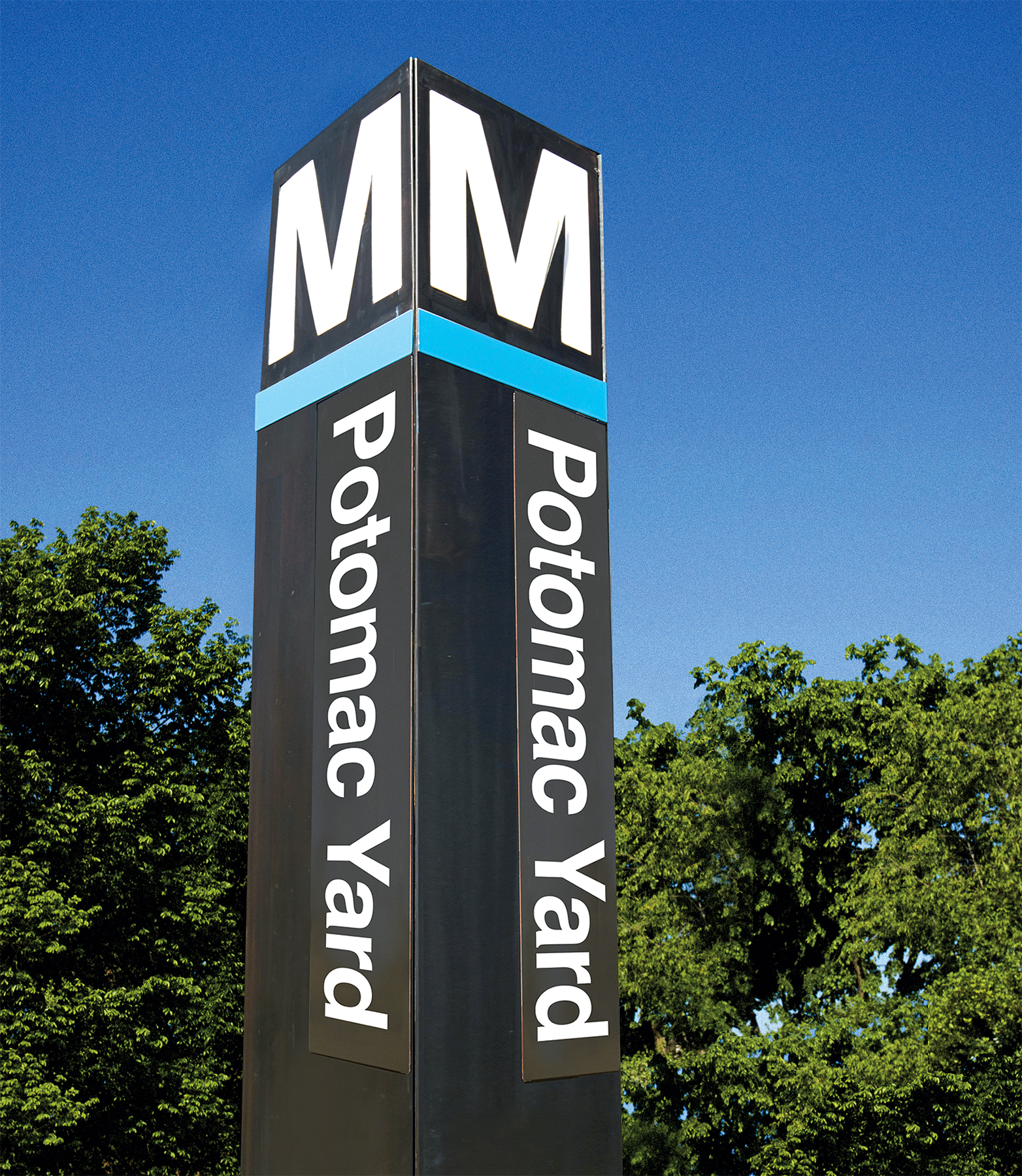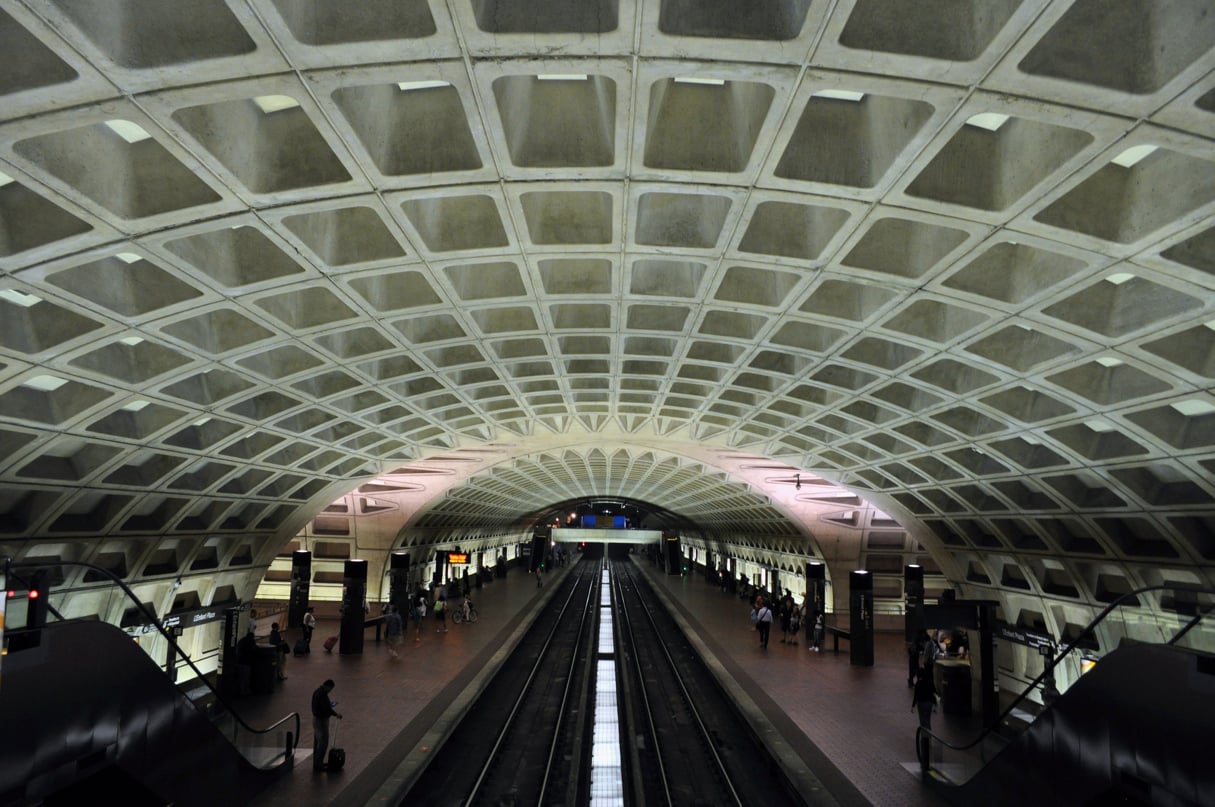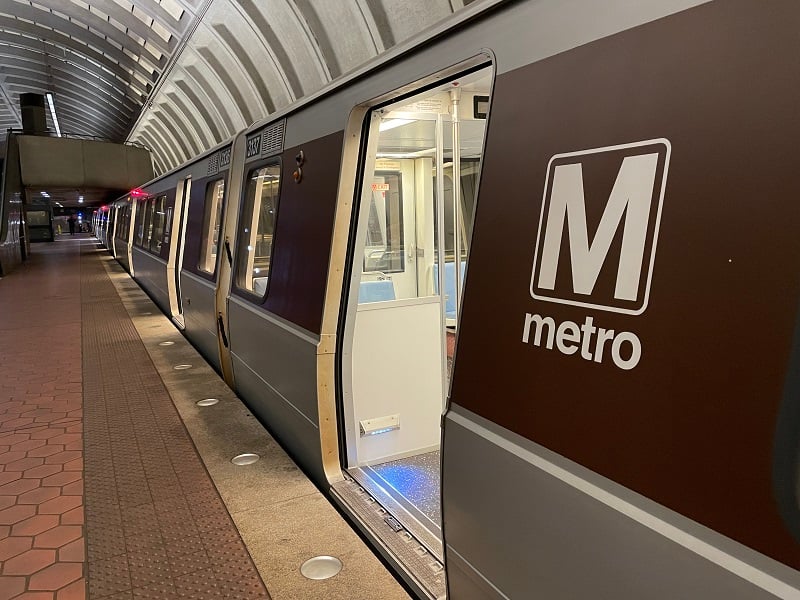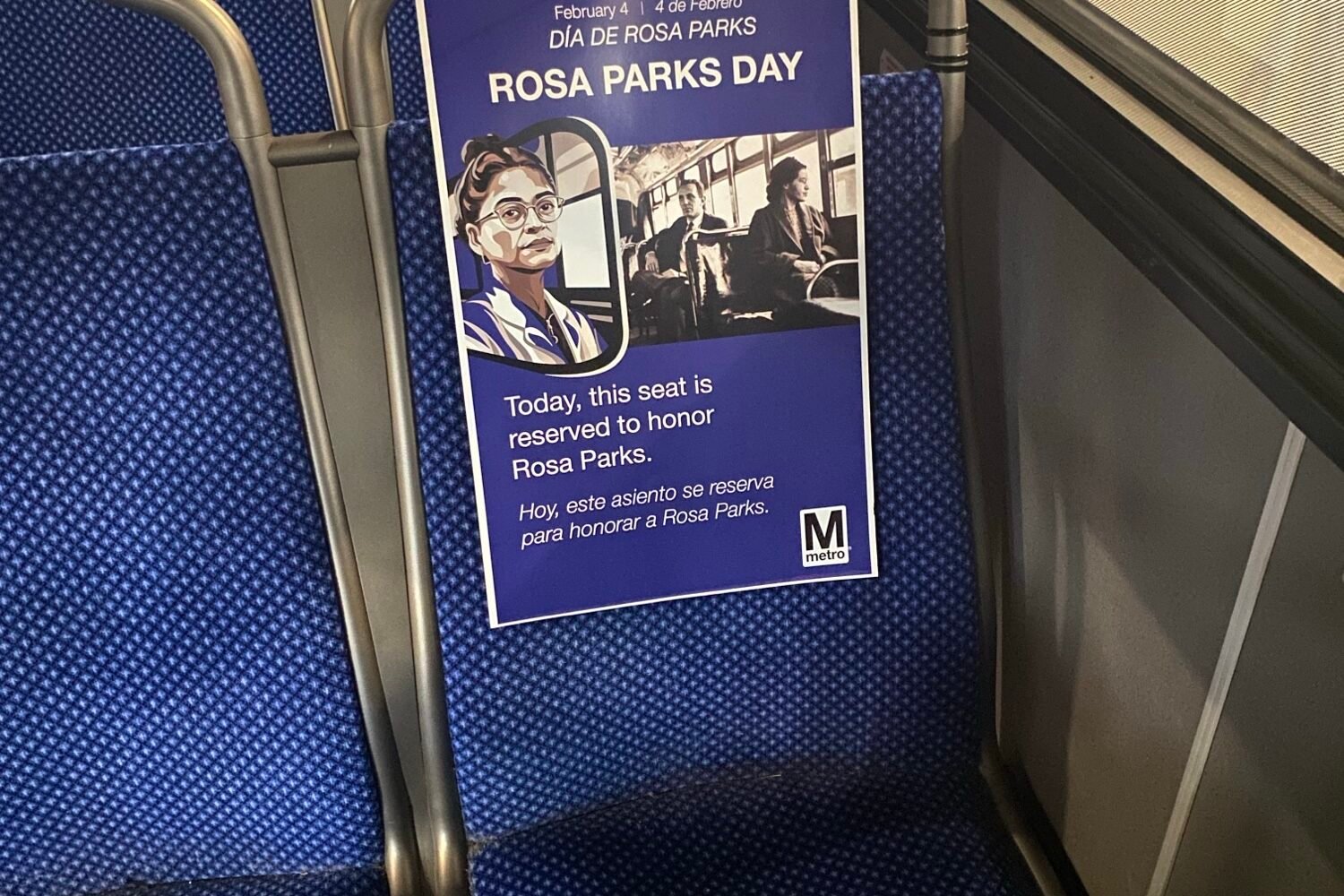As Metro’s Silver Line continues its Virginia expansion, riders in Alexandria are looking forward to the new Potomac Yard stop, which will break up a three-mile stretch between the Braddock Road and National Airport stations. The city of Alexandria, which is paying for the $320-million project, anticipates that it will attract 26,000 jobs and 13,000 residents to the area when it opens in late 2021 or 2022.
But earlier this year, the area’s development pioneers got some bad news. It wasn’t about the trains, the tunnels, the escalators, or any of the other high-profile boo-boos that have bedeviled Metro. Rather, it was about the entrances to the station itself. Thanks to budget constraints, there would be one less of them.
A glance at a map shows why this information landed so unpleasantly. The station will be located on the wrong side of some existing train tracks, which means two large pedestrian bridges were planned, one at each end of the station. With one of those bridges now out of consideration, people on the south side will have a much longer walk to get to the trains. Understandably, those who bought homes anticipating easy Metro access were displeased. Ditto businesses such as the National Industries for the Blind, which built a new headquarters near the now-scrapped entrance.
City officials said rising construction costs meant they had to drop the second entrance or else the whole station would have to be canceled. But this seems like a bad fix—and it points to a larger issue with Metro service in general: While people obsess over the perilous state of service, the system’s success is just as closely tied to easily overlooked things such as where planners decide to plop down the front door.
None of this is news to WMATA. Metro’s own research has found that access to station entrances is a big factor in whether people take the train. Reduced accessibility means fewer riders and also more commuters driving to the station—even when they live less than a mile away.
That creates a negative cycle: Nearby residents fill up the parking lots, blocking out people who live farther out. If those commuters then drive to work, that means more road traffic and less revenue to maintain subway service. Metro, hoping to boost ridership without spending much money, has concluded that making it easier to walk to some stations could help.
One of those stops is Montgomery County’s Forest Glen, which sits next to the Beltway and Georgia Avenue, near a highly congested intersection. Despite Forest Glen’s location in a densely populated area and proximity to a major hospital, ridership is among the lowest in the Metro system and has been falling for years.
Maybe that’s because getting to the station vaguely resembles an American Ninja Warrior obstacle course. From the west side, walkers have to cross the Beltway on a pedestrian bridge. From the east, they must survive eight lanes of fast-moving traffic on Georgia Avenue. There is one possible solution: Build a second entrance with a tunnel under Georgia Avenue. Earlier this year, the Montgomery County Council agreed to fund that fix using money from a proposed highway. If it happens, it will be a big victory for advocates hoping to make Metro more useful and safe, and it could inspire similar solutions at other stations.
Which brings us back to Potomac Yard. This brand-new Metro stop should be an opportunity to apply lessons from the past and improve how the system works. We know so much more now about the complexities of rail commuting; let’s use that information! Ditching one of Potomac Yard’s essential entrances will make it significantly harder to reach. It’s easy to imagine residents, faced with a circuitous walk to the tracks, deciding to hop into their cars or grab an Uber instead.
Getting to the Forest Glen station vaguely resembles an American Ninja Warrior obstacle course.
Admittedly, we don’t have a great solution to the funding issue. But slashing access in half surely isn’t the right idea. If Metro truly wants to increase ridership—or at least stop losing people—it needs to apply the lessons from its own research. Opening new stations is important, of course, but designing them to be as functional as possible seems just as essential. Ultimately, Metro’s success isn’t about trains or rails or schedules or routes. It’s about making the whole complicated system truly work for the people who use it.
This articles appears in the August 2018 issue of Washingtonian.




















